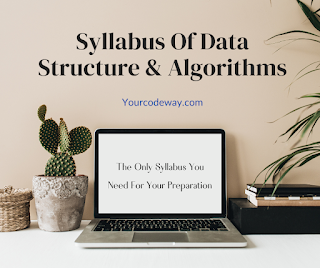- Introduction to Data Structures: The course will begin with an introduction to the basic concepts of data structures and algorithms. You will learn about the different types of data structures such as arrays, linked lists, stacks, queues, and trees. You will also learn about the different types of algorithms such as sorting, searching, and traversal algorithms.
- Arrays and Linked Lists: You will learn about arrays and linked lists and their characteristics. You will learn how to implement basic operations such as insertion, deletion, and searching in arrays and linked lists. You will also learn about different types of linked lists such as singly linked lists, doubly linked lists, and circular linked lists.
- Stacks and Queues: You will learn about stacks and queues and their characteristics. You will learn how to implement basic operations such as push, pop, and peek in stacks and enqueue, dequeue, and peek in queues. You will also learn about different types of stacks such as array-based stacks and linked list-based stacks, and different types of queues such as circular queues and priority queues.
- Trees: You will learn about trees and their characteristics. You will learn how to implement basic operations such as insertion, deletion, and searching in trees. You will also learn about different types of trees such as binary trees, AVL trees, and B-trees.
- Graphs: You will learn about graphs and their characteristics. You will learn how to implement basic operations such as insertion, deletion, and searching in graphs. You will also learn about different types of graphs such as directed graphs, undirected graphs, and weighted graphs.
- Sorting Algorithms: You will learn about different sorting algorithms such as bubble sort, insertion sort, selection sort, merge sort, and quick sort. You will learn the time and space complexity of each algorithm and how to implement them.
- Searching Algorithms: You will learn about different searching algorithms such as linear search and binary search. You will learn the time and space complexity of each algorithm and how to implement them.
- Advanced Data Structures: You will learn about advanced data structures such as heaps, hash tables, and tries. You will learn how to implement basic operations such as insertion, deletion, and searching in these data structures.
- Algorithm Design and Analysis: You will learn how to analyze the time and space complexity of algorithms and how to design efficient algorithms. You will learn about the big O notation, asymptotic analysis, and the master theorem.
- Applications: You will learn about the applications of data structures and algorithms in different fields such as databases, computer networks, and artificial intelligence.
This is a general syllabus for a typical data structure course and may vary depending on the university and the course. By understanding and mastering the concepts covered in this syllabus, you will be well-prepared for any programming job or projects that you undertake in the future.
Share this syllabus with your friends.






0 Comments